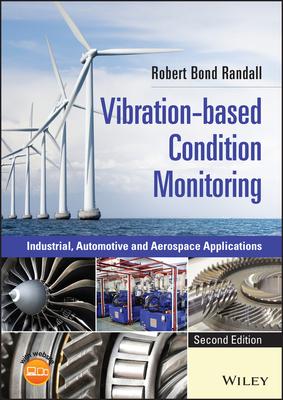Vibration-based Condition Monitoring
Stay up to date on the newest developments in machine condition monitoring with this brand-new resource from an industry leader
The newly revised Second Edition of Vibration-based Condition Monitoring: Industrial, Automotive and Aerospace Applications delivers a thorough update to the most complete discussion of the field of machine condition monitoring. The distinguished author offers readers new sections on diagnostics of variable speed machines, including wind turbines, as well as new material on the application of cepstrum analysis to the separation of forcing functions, structural model properties, and the simulation of machines and faults.
The book provides improved methods of order tracking based on phase demodulation of reference signals and new methods of determining instantaneous machine speed from the vibration response signal. Readers will also benefit from an insightful discussion of new methods of calculating the Teager Kaiser Energy Operator (TKEO) using Hilbert transform methods in the frequency domain.
With a renewed emphasis on the newly realized possibility of making virtual instruments, readers of Vibration-based Condition Monitoring will benefit from the wide variety of new and updated topics, like:
- A comprehensive introduction to machine condition monitoring, including maintenance strategies, condition monitoring methods, and an explanation of the basic problem of condition monitoring
- An exploration of vibration signals from rotating and reciprocating machines, including signal classification and torsional vibrations
- An examination of basic and newly developed signal processing techniques, including statistical measures, Fourier analysis, Hilbert transform and demodulation, and digital filtering, pointing out the considerable advantages of non-causal processing, since causal processing gives no benefit for condition monitoring
- A discussion of fault detection, diagnosis and prognosis in rotating and reciprocating machines, in particular new methods using fault simulation, since "big data" cannot provide sufficient data for late-stage fault development
Perfect for machine manufacturers who want to include a machine monitoring service with their product, Vibration-based Condition Monitoring: Industrial, Automotive and Aerospace Applications will also earn a place in university and research institute libraries where there is an interest in machine condition monitoring and diagnostics.
